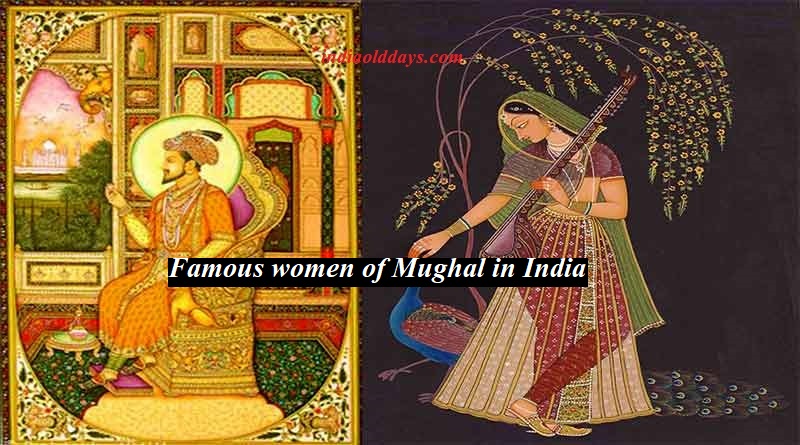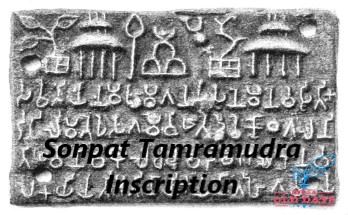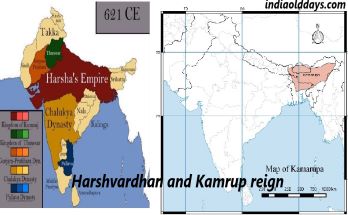Hun leader Mihirkul
The son of Toraman and his successor Mihirkul was a very cruel and tyrannical Hun ruler. The Governance of the 15th year of his rule is found from Gwalior. Information about his Governance is also received from the descriptions of Chinese travelers Sung-yung and Huanseang and the Greek writer Kasamus.
Sung-yun states that his capital was in Gandhar and he was opposed to Buddhism. Hiuensang narrates Shakal, the capital of Mihirkul, and writes that he was the owner of a large part of India. He conquered the neighboring kings and became the lord of Panchabharata. When Baladitya, the ruler of Magadha heard about the atrocities of Mihirkul, he monitored the borders of his kingdom and stopped tax paying it.
Mihirkul attacked Baladitya, but was defeated and taken captive. Baladitya left Mihirkul at the behest of his mother. From here Mihirkul ran towards Kashmir where the king gave him shelter.
But Mihirkul killed the king of Kashmir and himself became the ruler of Kashmir. He also killed the king of Gandhara after that. And destroyed 1600 stupas and sangharams. He died within a year of this.
The Baladitya that Hiuensang refers to is identified with Narasimhagupta Baladitya.
Kasamus, who came to visit the ports of western India in 530 AD, writes that in the north of India is the kingdom of the White Huns. Their King is Gollas, Who, while going to war, takes a large army of two thousand elephants and horsemen. He is the lord of India, forcing people to pay taxes by torturing them. The river Phisson (Sindh) separates all the countries of India from the country of the Huns.
Here Gollas refers to Mihirkul. Kasamus also states that he laid siege to a city in central India and later took control of it. This city refers to Gwalior, from where Mihirkul’s article is found. It is clear from this description that the original Hun-kingdom was to the west of Sindh, But later Mihirkul won a large part of northern India.
The Baitul Donation box 518 AD mentions the Guptas only. Hence Mihirkul would have been conquered only after this date. There is also a description of Mihirkul’s atrocities in Kalhan’s Rajatarangini.
Thus the conclusions come from various sources, that for 15 years from his ascension, Mihirkul conquered various places and established his sovereignty in northern India. In the article of Gwalior, Mihirkul has been called the great mighty and the lord of the earth.
According to the description of the Chinese traveler Hunsang and the Mandsaur article, Mihirkul was badly defeated by Magadh King Baladitya and Malvanresh Yashodharman and was banished from northern India. But his defeat was not decisive. Mihirkul soon became the king of Kashmir and he also won Gandhara.
There are different opinions about the defeat of Mihirkul, which are as follows –
In the Mandsaur article, the credit of defeating Mihirkul for the first time has been given to Yashodharman, which is just a fantasy. Before this, the credit of first defeating Mihirkul goes to Baladitya.
The description of Hieunsang shows that he became the ruler of Kashmir only after he was defeated by Baladitya. He was the ruler of entire North India before he was defeated by Baladitya. The second article of Mandsaur dated 532 AD shows, That Yashodharman defeated the kings of North and East and assumed the title of Rajadhiraja Parmeshwar. Mihirakul must have been among the kings of the north here. Thus in 530 AD Mihirkul was defeated by Yashodharman. This was Mihirkul’s final defeat. As a result, his power was destroyed. Thus Yashodharman saved the country from a great calamity.
Harnley is of the view that Yashodharman was a feudatory of Baladitya and fought against the Huns on behalf of his emperor and later declared his independence.
Religion of Mihirkul
Mihirkul Shaiva was devout. He was a fierce enemy of Buddhism. According to Kalhan, he built a Shiva temple in Srinagar. He was a very cruel and bloody ruler. Kalhan compares him to the god of destruction. Jain writers consider him the first of the wicked.




